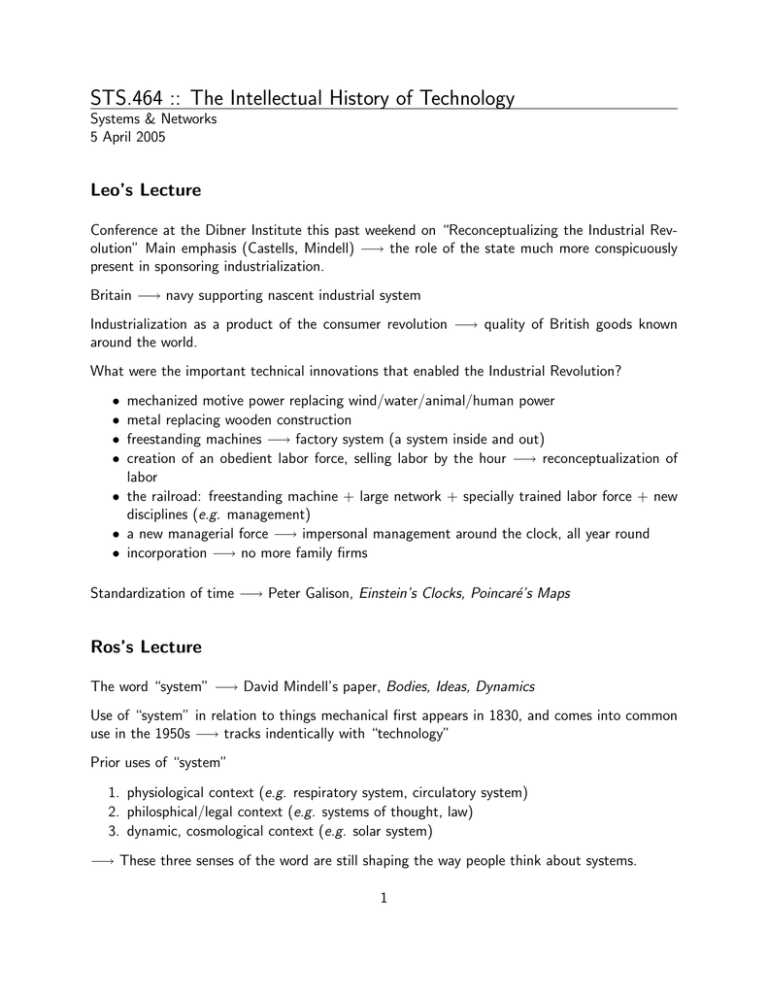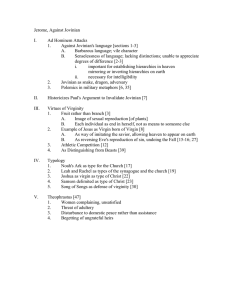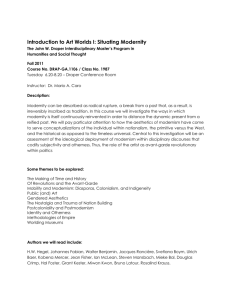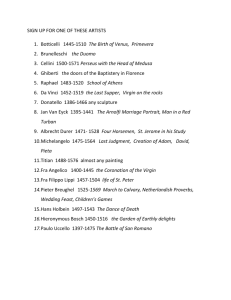STS.464 :: The Intellectual History of... Leo’s Lecture
advertisement

STS.464 :: The Intellectual History of Technology Systems & Networks 5 April 2005 Leo’s Lecture Conference at the Dibner Institute this past weekend on “Reconceptualizing the Industrial Rev­ olution” Main emphasis (Castells, Mindell) −→ the role of the state much more conspicuously present in sponsoring industrialization. Britain −→ navy supporting nascent industrial system Industrialization as a product of the consumer revolution −→ quality of British goods known around the world. What were the important technical innovations that enabled the Industrial Revolution? • mechanized motive power replacing wind/water/animal/human power • metal replacing wooden construction • freestanding machines −→ factory system (a system inside and out) • creation of an obedient labor force, selling labor by the hour −→ reconceptualization of labor • the railroad: freestanding machine + large network + specially trained labor force + new disciplines (e.g. management) • a new managerial force −→ impersonal management around the clock, all year round • incorporation −→ no more family firms Standardization of time −→ Peter Galison, Einstein’s Clocks, Poincaré’s Maps Ros’s Lecture The word “system” −→ David Mindell’s paper, Bodies, Ideas, Dynamics Use of “system” in relation to things mechanical first appears in 1830, and comes into common use in the 1950s −→ tracks indentically with “technology” Prior uses of “system” 1. physiological context (e.g. respiratory system, circulatory system) 2. philosphical/legal context (e.g. systems of thought, law) 3. dynamic, cosmological context (e.g. solar system) −→ These three senses of the word are still shaping the way people think about systems. 1 What are the iconic uses of systems? 1. factory system (a) American system (b) Fordism (c) Taylorism (“the system shall be first”) 2. 3. 4. 5. 6. 7. 8. 9. 10. 11. 12. 13. 14. 15. canals railroads telegraph postal system (International Postal Union c. 1850) roads electrical (distribution) telephone managerial/organizational (e.g. file systems) state/military weather forecasting controls, feedback, guidance interstate system, Big Dig Internet public school system and other social services and systems Mindell: underwater archaeology, economic history When do people start thinking of the world as a system? Around the 1930s. “A nexus of techniques reinforcing each other in certain ways.” 19th century −→ visibility of the network makes it a technological artifact 20th century −→ “seeing the virtual network” Marx & Castells: real power is the flow of capital paper money −→ form of writing Cronon, Nature’s Metropolis, chapter on the futures market faith in the financial system dissociation, abstraction −→ classification system, receipts; also the invention of the grain elevator turning things into flows Technological determinism in this example: • soft: the grain elevator enabled this to happen, but didn’t explicitly cause it • hard: imputes to the invention an initiating power, the grain elevator technology is the driving/initiating force 2 Liquidity, commodification, machinery of representation, technologies that make you able to make one thing stand for something else. Contrast between the logic of history (technological determinism is irrational) vs. the lived experience (which often feels deterministic). Cultures of technology: engineering, organization. (Mindell and Hughes both use this word, cultures.) Classes: Pierre Bourdieu, Distinction Next Week Henry Adams: the 19th­century intellectual who thought about this stuff the most Response to technological innovation seen in the arts: the Armory Show on the eve of WWI The Chicago Exposition: the Turner thesis, marked a turning point in many fields The Education of Henry Adams, “The Dynamo and the Virgin” • a great binary conception: production vs. reproduction • view of history (spurious, yet interesting) • conceit: the power of the idea of the virgin – the Cult of the Virgin called forth inventive energies (e.g. medieval cathedrals) – automatic dynamos −→ modern equivalents of the virgin – the god of the modern world Futurist manifestos What we’re talking about: modernism and modernity as large concepts, technology’s role in the birth of modernity, broadly. Modernism: movement in the arts (e.g. Picasso, Joyce, Mann, Proust, Eliot), ability to arrive at most subtle and inclusive representation of human experience Look at paintings (MFA, Sackler, in books) Crossing the divide between aesthetic experience and our subject in this class. 3


